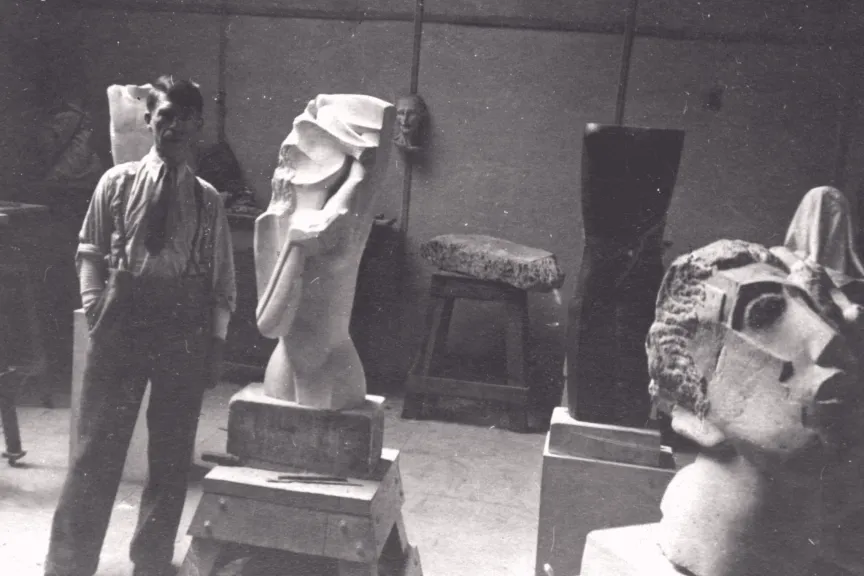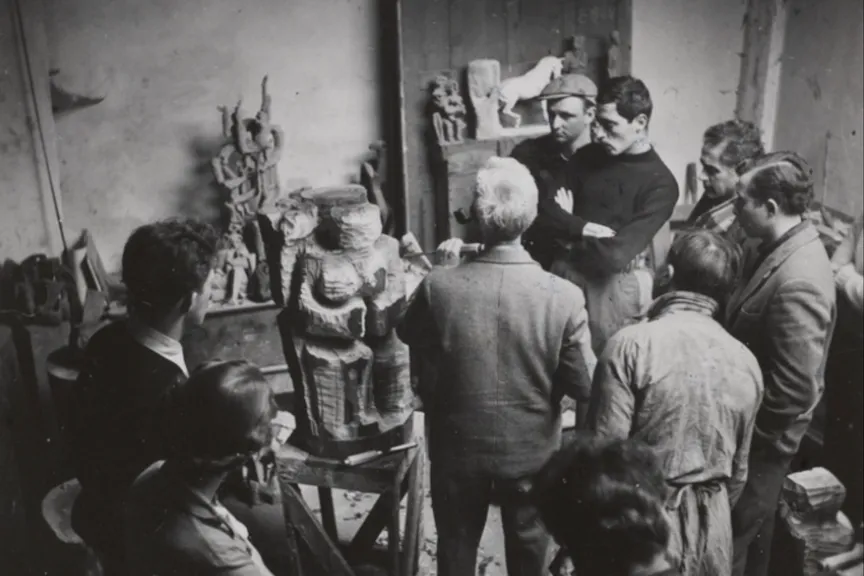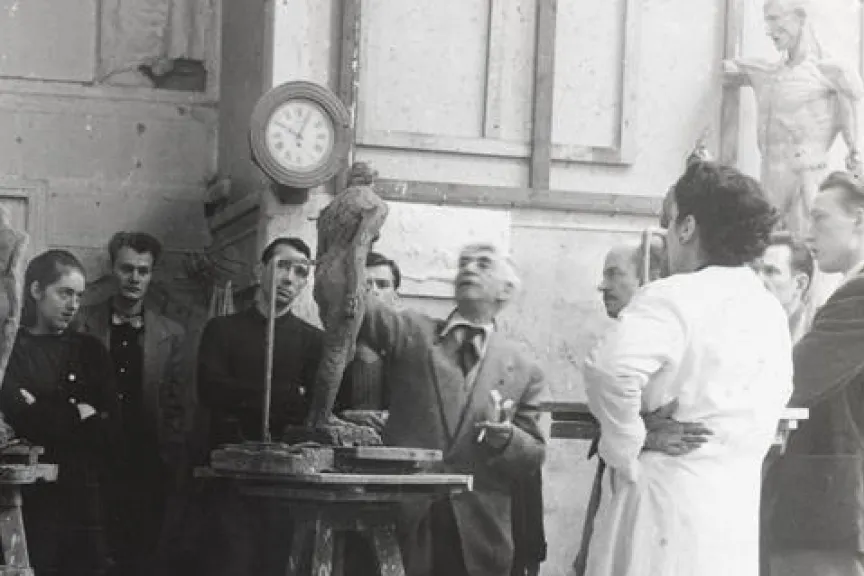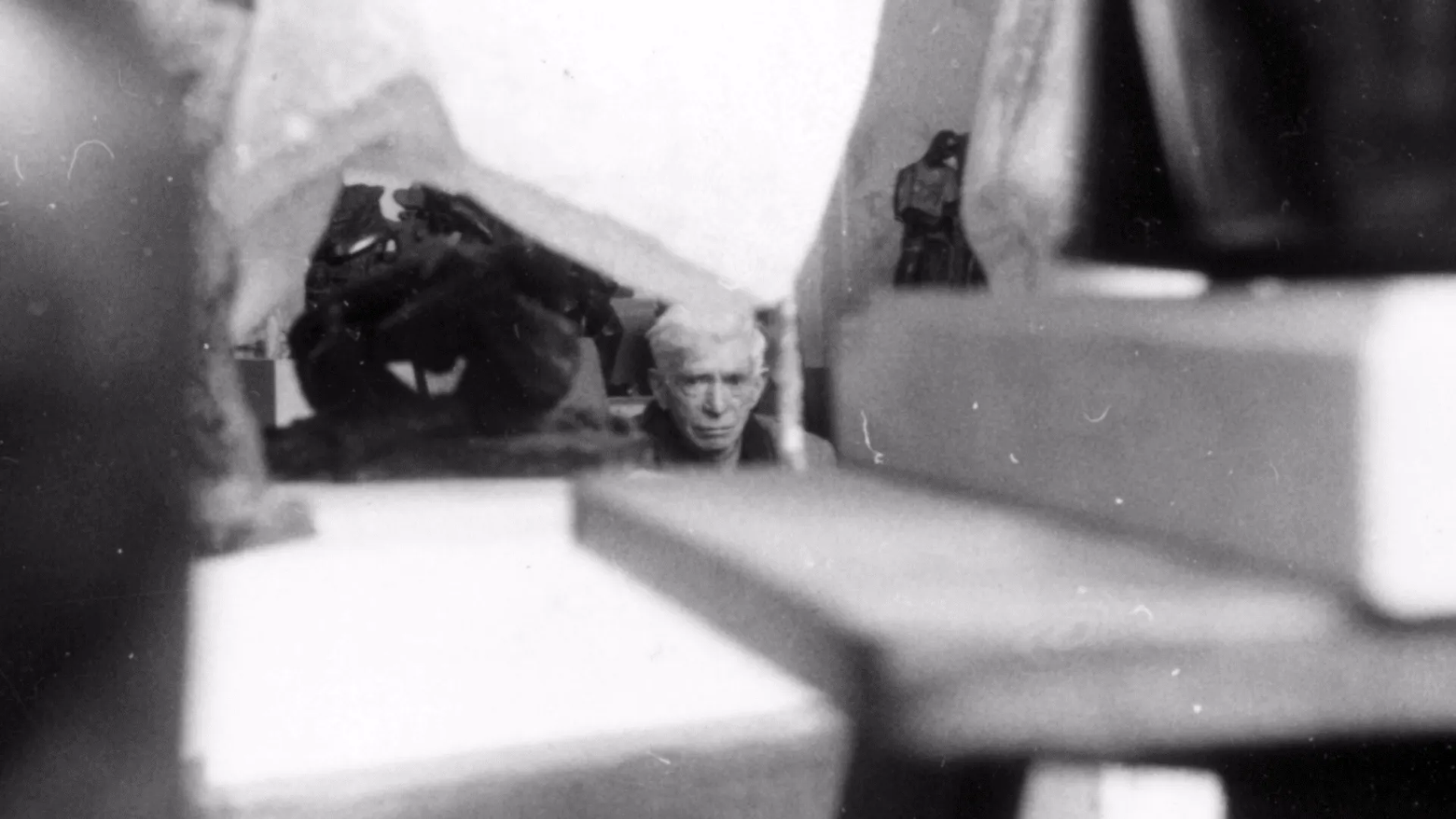In the United-States
In September 1943, during his exile in New York, Zadkine obtained a post as a teacher (he was given the title of "instructor") in a well-known art school, The Art Students League. Founded "by artists for artists" in 1875, this school had trained a number of artists who had become famous: Alexander Calder, Barnett Newmann, Robert Rauschenberg and Cy Twombly… In the diary which he kept in those years, Zadkine declared that he was happy to have found this work to help him live, the sale of his works not proving to be sufficient.
Black Mountain College
Before his return to France in 1945, Zadkine taught for a few months at Black Mountain College, in North Carolina. He had previously refused the offer of Laszlo Moholy-Nagy to teach at the Institute of Design in Chicago. On its foundation in 1933, this experimental university had entrusted the direction of artistic teaching to the artist Josef Albers and his wife Anni Albers, who had just settled in the United States after leaving Germany where both had been teachers at the Bauhaus. Black Mountain College then became a centre where the teaching of the Bauhaus was passed on. In the 1950s, on the instigation of the poet Charles Olson who created the magazine "Black Mountain Review", summer seminars were headed by John Cage for music, Merce Cunningham for dance, and Franz Kline and Robert Motherwell for painting. Black Mountain College closed its doors in 1957.

The Ossip Zadkine Studio of modern sculpture and drawing
In 1948, Zadkine decided to open an art school in a studio at 70 Rue Notre-Dame-des- Champs, near his house and studio at 100 Rue d’Assas. This institution entitled "The Ossip Zadkine Studio of Modern Sculpture and Drawing", was approved by the USA government’s Department of Veterans, thus allowing veterans from the Armed Forces to enrol as students there.
In the English language presentation document for the school, it was indicated that the courses were delivered in English. The tuition fees included the following materials (clay, terracotta), but the students were responsible for providing their tools. Taking inspiration from his teaching at The Art Students League of New York, Zadkine declared that he wished to encourage his pupils to develop a personal creative approach. In connection with the G.I. Bill of Rights, many Americans took his courses, including the painter Kenneth Noland, for whom Zadkine wrote the catalogue preface for his exhibition at the galerie Creuze in 1949.

At the Academie de la Grande Chaumiere in Paris
In 1946 Zadkine was appointed to direct sculpture classes at the Académie de la Grande-Chaumière, located in Montparnasse, in the Rue de la Grande-Chaumière. His course was a resounding success. He taught there until 1958. "My class at the Académie de la Grande-Chaumière is a meeting point for international youth who are investigating the new world of forms. I had almost 30 pupils to begin with and at each critical conference which I hold on Fridays between 10 am and 12 pm, there is a horde of foreign nationals who come to hear what I have to say. These young people are very heart-warming, but I leave as tired as if I'd just gone down with a cold, he wrote in 1950 to his friend André de Ridder.
Amongst his foreign students who became well-known sculptors, the following are worthy of mention: Alicia Penalba who came from Argentina, Manuel Felguérez from Mexico, Dietrich-Mohr from Germany, Richard Stankiewicz from the United States and Marta Colvin from Chile. The latter paid homage to Zadkine by publishing his 1949-1950 courses: “n° 10 Rue de la Grande-Chaumière, Ossip Zadkine’s studio, a Thursday. Even before entering, you can hear his voice. Ardent and firm, it is that of a master who possesses certainty and communicates it with faith, fervour and fire".
Another of his students Gaston Louis-Marchal, who later became one of his close friends, published a "transcription" of his teaching during the year 1953. To his pupils working from a living model, Zadkine dispensed his advice: "In front of nature, look constantly, study incessantly – but know how to choose as - in any case you can't see everything, and on the other hand you mustn't keep everything".

